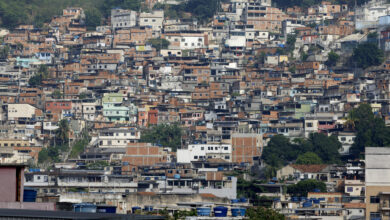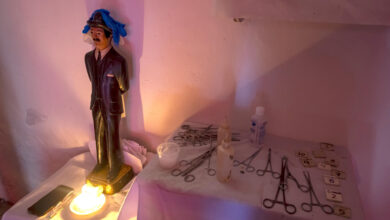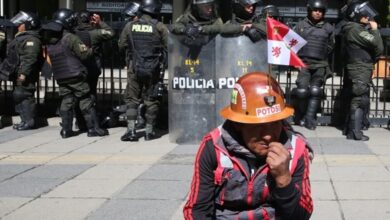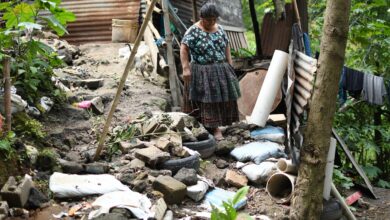Haiti’s Hunger Crisis: Artibonite’s Fields Turn to Fear as Gangs Tighten Their Grip
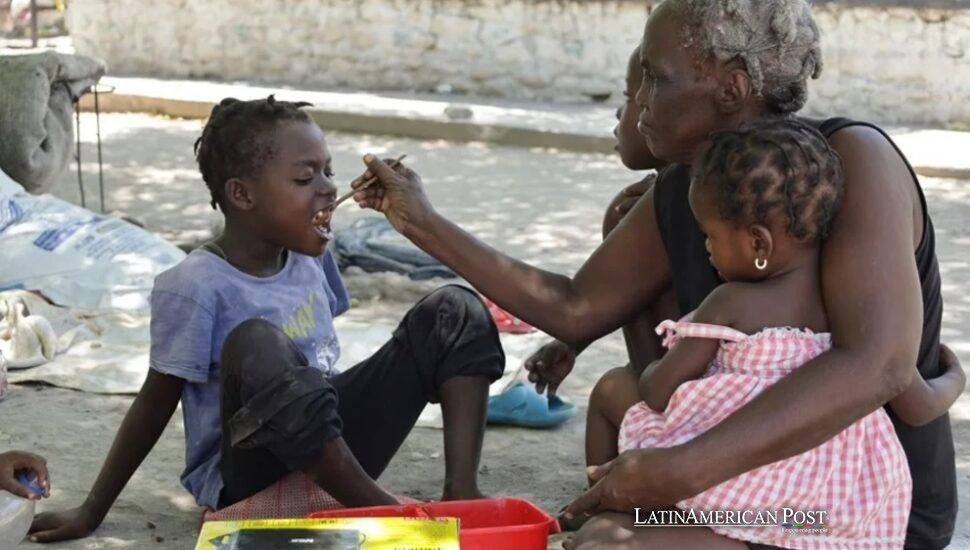
In Haiti’s fertile Artibonite Valley, once celebrated for its rice fields and proud farming traditions, armed gangs now dictate who eats and who starves. Families like that of Fleuranta Cilné survive on handouts, trapped between violence and hunger.
Hunger in a Land That Once Fed Itself
At a crowded distribution point in Petite Rivière de l’Artibonite, the air feels heavy with despair. Children cry, adults push forward, and aid workers hand out plates of sticky rice with meat sauce—the only meal many will eat that day.
“I sometimes go without eating when the food runs out,” confessed 42-year-old Fleuranta Cilné, balancing a plastic plate in her hands. She once had a home in Verretes, but gangs forced her to flee. Now she lives under a tarp in a crowded camp for displaced families.
“I lost everything. The gangs took everything. My husband left to work and never came back—he was killed,” she told EFE. Cilné suffers from a stomach ulcer but cannot afford medical care. She relies on aid rations, and her children’s education has become a dream she can no longer afford. “I can no longer send them to school,” she said.
Artibonite, barely 100 kilometers north of Port-au-Prince, was once Haiti’s breadbasket. It’s rice and corn that feed the nation. Today, weeds choke abandoned fields, and families huddle in camps without water, electricity, or healthcare. According to Haiti’s food security authority (CNSA), 5.7 million Haitians now face food insecurity—a record in a country where hunger has long been chronic.
From Armed Politics to Lawless Terror
How did the most productive valley in Haiti become a battleground? Many trace the spiral back to the 2015 legislative elections, when politicians armed young men to intimidate voters. The votes passed, the promises vanished, but the guns remained.
By 2017, insecurity escalated. More than 20 self-defense groups emerged, but instead of stabilizing the region, they further fractured it. Today, at least 20 armed groups—gangs and vigilantes alike—operate in Artibonite, according to the UN Integrated Office in Haiti (BINUH). Two names dominate conversations whispered in fear: Gran Grif and Kokorat San Ras. Both emerged between 2015 and 2017, and both were infamous for massacres, rape, kidnapping, and extortion.
“They violate girls and women, they rob us, they kidnap neighbors, they kill entire families,” one farmer whispered to EFE, too afraid to use his name. The scars are everywhere: charred homes, abandoned markets, and streets silenced by fear.
International actors have tried to intervene. Former lawmaker Prophane Victor and ex-senator Youri Latortue were sanctioned for allegedly financing gangs in Artibonite. But sanctions are paper walls. On the ground, armed men still tax farmers, block roads, and strangle communities.
Camps of Despair and Survival
Displacement now defines life in Artibonite. Families expelled from their homes cluster in overcrowded camps, waiting for food, for safety, for hope that never comes.
“This is how I sleep,” Cilné said, pointing to a damp mattress on bare ground. “I am sick and cannot go to the hospital.” Her words echo across the valley: thousands of lives dismantled not by earthquakes or hurricanes but by human cruelty.
In these camps, aid distributions are chaotic dramas. Adults jostle, children cry, and tempers flare. People arrive with plastic containers, old pots, even soda bottles—anything to hold a portion of rice. Hunger is raw, visible, and merciless.
Despite the deployment of the Misión de Apoyo a la Seguridad (MMS) alongside Haiti’s National Police, gangs continue to spread. Self-defense groups, once hailed as protectors, now resemble armed gangs themselves, worsening instability. What was once Haiti’s richest farmland has become a stage of permanent terror.
A Country Starving While Politics Plays With Fire
Haiti’s hunger crisis is not about lack of soil or seed—it is about the collapse of political responsibility. The Artibonite Valley, fertile enough to feed millions, has been surrendered to armed men. Politicians armed them, tolerated them, or profited from them. Now the state seems absent, leaving communities to the mercy of warlords.
The CNSA’s numbers speak volumes: more than half the country cannot secure enough food. Inflation eats away at meager wages. Unemployment feeds despair. And gangs control not only roads but food itself. When they block highways, farmers cannot sell, their produce, and families cannot buy it. Hunger itself becomes a weapon.
The tragedy is that this violence was not inevitable. It was the result of choices: arming youth for elections, ignoring corruption, and abandoning rural investment. Haiti, a nation of resilience, now faces a survival test not from natural disaster but from its own fractured governance.
International aid can fill empty plates, but it cannot restore trust in institutions or revive the farms of Artibonite. For that, Haiti needs courage: dismantle collusion networks, restore security, and reinvest in agriculture. Without this, women like Cilné will keep queuing for rations, mourning husbands and homes, and watching the future of their children slip further away.
Also Read: Venezuela Turns Pensioners into Militia Amid Rising US Tensions
Haiti’s greatest tragedy is not that it cannot feed itself; rather, it is that it cannot feed itself. It is in the valley that once fed the nation, the noise of hunger has replaced the silence of abandoned fields, while politics plays with fire and gangs tighten their grip.

